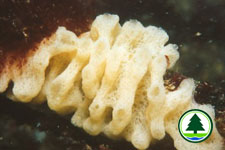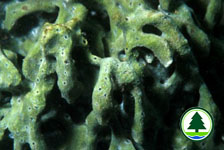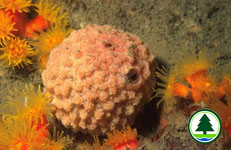Hong Kong Corals & the Associated Marine Life
|
Hong Kong Corals & the Associated Marine Life
Sponges are the oldest and the simplest living group of multicellular organisms. They are sedentary filter-feeders, which can filter water equal to 4-5 times of their volumes every minute. Water is pumped from inhalant pores on the surface and lead to the inner canals which are lined with cells (known as choanocytes) of whip-like tails. Rhythmic beating of these tails pumps water through the body in one direction. At the same time, food particles and oxygen in the water are filtered out and the leftover will finally be expelled through exhalent pores. In the world, there are estimated to be 2500-9000 species of sponges and less than half of these have been described so far. Hong Kong's sponge fauna has been poorly investigated. Sponges vary greatly in forms and sizes, from thin encrusting sheets to large barrels or vases. The main key for identifying this organism is the size, type, distribution and arrangement of the supporting spicule.
Clathrina sponges have spicules made only of calcium carbonate and they grow to less than 10 cm high. Around 500 species of Clathrina have been described and they are more common in temperate than tropical waters.
This common green sponge displays an algal-like shape because the algae, Ceratodictyon spongiosum is embedded in the body of the sponge and the algal branches are woven into a tight mass by the sponge spicules. This species is often found in shallow waters in order to acquire sunlight for photosynthesis.
Tethya are also known as "golf-ball sponges". They inhabit deep rocky area where gorgonians and other non-reef-building corals are commonly found.
|
||||||||
|
||||||||


